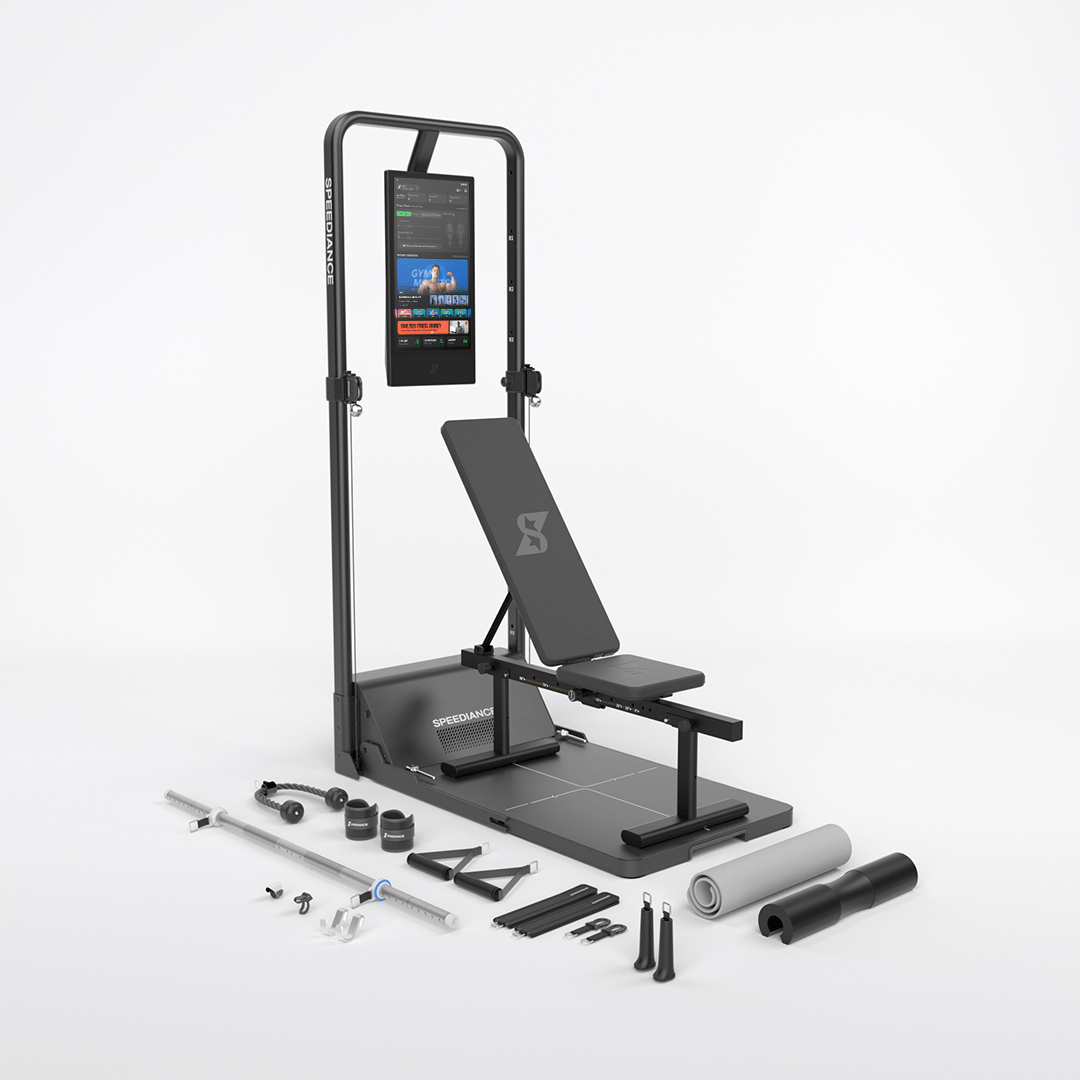

Running is a great way to stay fit, but if you want to enhance your speed, endurance, and overall performance, integrating cross-training into your routine is essential. Overuse of the same muscle groups can lead to injuries and limit progress. By incorporating Speediance Smart Gym into your training, you can target different muscles, improve strength, and make your workouts more effective and enjoyable.
In this article, we’ll show how Speediance equipment can complement your running goals with tailored exercises to enhance strength, flexibility, and endurance while reducing injury risks.
Why Cross-Training Matters for Runners
Cross-training is critical for runners because it offers benefits that running alone cannot provide:
-
Injury Prevention: Balances the muscles used in running, reducing strain and preventing injuries like shin splints or runner’s knee.
-
Increased Strength: Strengthens underutilised areas like the core, upper body, and hips, which improve running form and power.
-
Enhanced Endurance: Boosts aerobic fitness without overloading joints, allowing you to run longer with more stamina.
-
Mental Refreshment: Adds variety to your routine, keeping workouts exciting and preventing burnout.
How Speediance Equipment Enhances Running Performance
1. Strength Training for Improved Power
Strength training is essential for runners to improve power, form, and endurance. With the Speediance Smart Gym, you can target key muscle groups used in running, such as quads, hamstrings, glutes, calves, and the core.
-
Recommended Exercises:
-
Squats and lunges: Build leg strength and improve stability.
-
Planks: Strengthen your core for better posture and reduced fatigue during runs.
-
Deadlifts: Enhance posterior chain muscles for explosive power.
Tip: Gradually increase resistance using Speediance’s digital weight adjustments as your strength improves.
2. Low-Impact Cardio for Joint Relief
Running is high-impact and can strain joints over time. Incorporating low-impact cardio provides an effective way to maintain endurance without the added stress.
-
Suggested Equipment:
-
Rowing Bench: Delivers a full-body workout, engaging the arms, back, and legs while boosting cardiovascular fitness.
-
Cycling or resistance-based workouts: Strengthen the lower body without joint strain.
Tip: Use rowing as an active recovery workout on days when running feels too taxing.
3. Flexibility and Mobility for Injury Prevention
Tight muscles can lead to poor running form and injuries. Regular flexibility and mobility exercises improve your range of motion and recovery.
-
Key Stretches:
-
Hamstring and calf stretches: Reduce tightness and prevent cramping.
-
Hip flexor stretches: Improve stride length and lower back comfort.
With Speediance’s Adjustable Bench, you can perform supported stretches, targeting problem areas like hips, quads, and calves.
Tip: Incorporate dynamic stretches before runs and static stretches post-workout to optimise flexibility.
4. Balance and Stability Work for Better Form
Good running mechanics depend on balance and stability. Speediance helps you strengthen the stabilising muscles that control posture and movement.
-
Effective Exercises:
-
Single-leg squats: Train balance and core stability.
-
Functional movements: Strengthen the ankles, knees, and hips to improve stride efficiency.
Tip: Perform stability exercises 1–2 times per week to enhance form and prevent falls or injuries during runs.
Sample Cross-Training Routine with Speediance Equipment
Here’s a weekly routine designed to complement your running schedule:
Strength Training (2–3 Times per Week)
-
Squats: 3 sets of 10–12 reps
-
Lunges: 3 sets of 10 reps per leg
-
Planks: 3 sets, hold for 30 seconds
-
Deadlifts: 3 sets of 8–10 reps
Focus: Lower body and core strength for improved running power.
Low-Impact Cardio (1–2 Times per Week)
-
Rowing: 20–30 minutes at moderate intensity
-
Cycling: Low-resistance sessions for endurance.
Focus: Aerobic endurance without joint strain.
Flexibility and Mobility (2–3 Times per Week)
-
Hamstring Stretch: Hold for 30 seconds per leg
-
Hip Flexor Stretch: Hold for 30 seconds
-
Calf Stretch: Hold for 30 seconds
Focus: Reducing tightness and enhancing recovery.
Balance and Stability (1–2 Times per Week)
-
Single-Leg Squats: 3 sets of 10 reps per leg
-
Stability Ball Exercises: 3 sets of 15 reps
Focus: Building stabilising muscles to improve running mechanics.
How to Integrate Cross-Training with Running
Balancing running and cross-training requires planning. Here’s how to make the most of your schedule:
-
Alternate Workouts: Pair running days with cross-training to avoid overloading the same muscles. For example:
-
Monday: Running
-
Tuesday: Strength Training
-
Wednesday: Low-Impact Cardio
-
Thursday: Running
-
Friday: Flexibility and Mobility
-
Saturday: Running
-
Sunday: Recovery or light stretching
-
Adapt to Your Needs: Adjust intensity based on your energy levels and running goals.
-
Don’t Skip Rest Days: Include active recovery sessions using the Adjustable Bench for light stretches.
Conclusion
Cross-training with Speediance Smart Gym is a game-changer for runners. By combining strength training, low-impact cardio, flexibility, and balance work, you can improve running performance, prevent injuries, and keep your workouts enjoyable.
Ready to level up your running game? Explore the workout page for more ideas or contact us through the contact page for personalised guidance. Let Speediance help you achieve your running goals with smarter, more effective training.
Disclaimer
This article is for informational purposes only and does not constitute professional fitness or medical advice.
